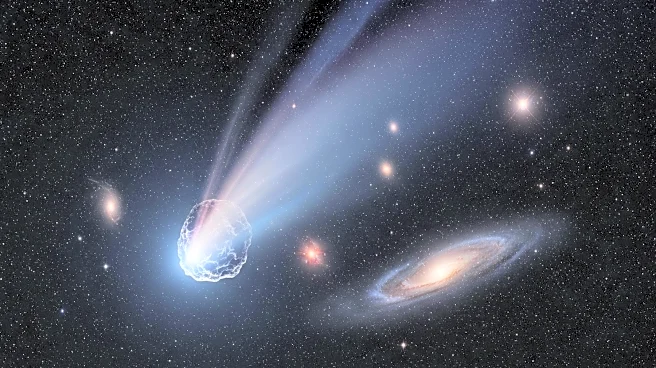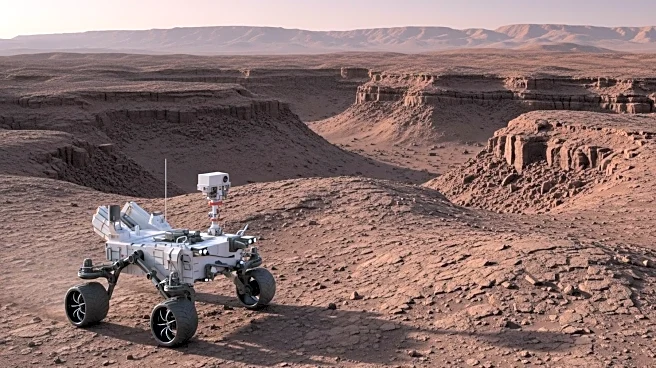What's Happening?
Planetary scientists have identified a seasonal ozone layer on Mars, attributed to the extreme cold within the Martian polar vortex. This discovery was made using data from the ExoMars Trace Gas Orbiter and Mars Reconnaissance Orbiter. The polar vortex, a low-pressure system rotating around Mars' poles, exhibits temperatures approximately 40°C colder than the surrounding atmosphere. This cold environment leads to the accumulation of ozone, as water vapor freezes out, preventing the usual destruction of ozone by solar radiation. The study provides insights into Mars' atmospheric chemistry and its evolution, including the potential past presence of a protective ozone layer.
Why It's Important?
Understanding the Martian atmosphere is crucial for future exploration and potential colonization. The presence of ozone, a reactive form of oxygen, indicates active atmospheric chemistry, which could inform scientists about Mars' historical climate and atmospheric conditions. This knowledge is vital for assessing the planet's habitability and planning future missions. Additionally, the study of Mars' polar vortex can offer comparative insights into similar phenomena on Earth, enhancing our understanding of atmospheric dynamics across planets.
What's Next?
Further research will likely focus on monitoring the Martian polar vortex and its impact on atmospheric conditions. Scientists may continue to use instruments like the Atmospheric Chemistry Suite and Mars Climate Sounder to gather more data during different Martian seasons. These efforts could lead to a deeper understanding of Mars' atmospheric processes and inform future missions aimed at exploring the planet's surface and atmosphere.
Beyond the Headlines
The discovery of a seasonal ozone layer on Mars raises questions about the planet's past and its potential to support life. If Mars once had a protective ozone layer similar to Earth's, it might have been more hospitable to life. This finding could influence the search for past life on Mars and guide future exploration strategies.










